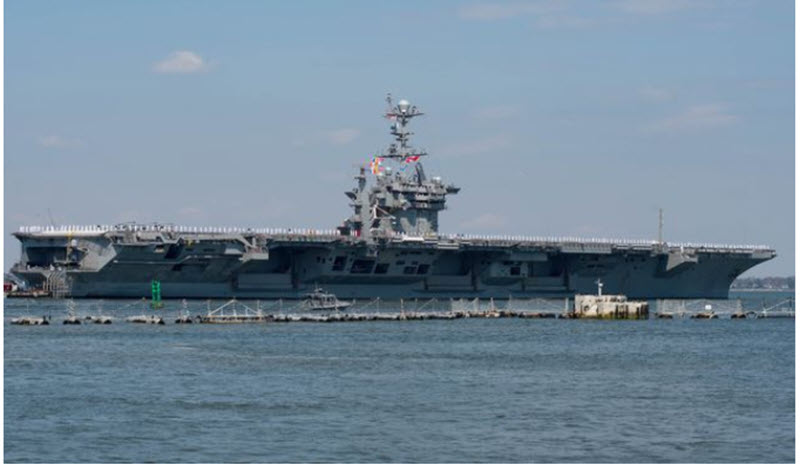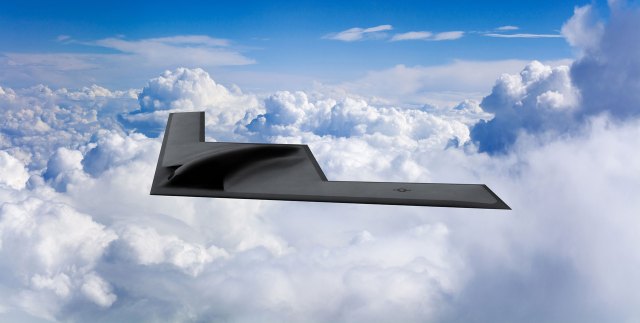Is the U.S. Military Ready for War? Not by a Long Shot.
Dec 3 2022It is a world that bristles with hostiles — China, Russia, Iran, North Korea — any of which could trigger war. Yet the consensus is that the U.S. military is, on many counts, vastly unprepared.
Actually, that consensus comes principally from analysts at conservative think tanks, many of them former military, who report their findings in the conservative media, in keeping with the right's long-standing doctrine that America must maintain a military without peer if we are to retain power in the world.
The subject of deficiencies in our military hardly gets a mention in liberal media, at least over the past year and a half reviewed here. There, attention to the military tends to budgetary politics and the progressive element's lobbying to divert spending on defense so as to fund domestic social programs.
Now running to over $800 billion a year, the defense budget seems gargantuan, but the prime measure is priorities — what the nation should be able to afford for defense as a percentage of its gross domestic product.

The chart shows the steady decline of defense outlays relative to GDP. Defense spending reached a postwar high of 9.1% in 1968 but never fell below 4.5% even in the 1970s, reaching a high of 6% in 1986 at the height of the Reagan buildup that helped win the 
The U.S. Navy aircraft carrier USS Harry S. Truman departs with its strike group toward the Middle East from Naval Station Norfolk, Va., April 11, 2018, with sailors lining the deck.
Cold War. As seen, it is currently about 3.3% of GDP.
That has consequences. The Heritage Foundation recently rated the U.S. military as "weak" in its annual index of military strength, the first such rating in the index's nine year existence. Its criterion is whether our military would prevail in two conflicts at once.
at seaThe Navy and Air Force are the most-cited as besieged with problems. A war with China would be a naval war, and the United States Navy is not at all ready. We have a navy that has half the number of ships as during the Cold War but is expected to be on station around the world at the same mission pace. The Navy has said for years that to be capable of defeating peer adversaries like China, it must have 350 ships and another 150 unmanned or lightly manned vessels for a total of 500.
But in the 15 years up to the end of the Trump administration, the U.S. fleet grew from 291 war ships to a meager 296. During the same period, China’s navy grew to 360 from 216. Naval old hands are quick to point out that much of China’s navy consists of small patrol boats, no match for the U.S. Navy's fire power. True, but China is upgrading rapidly.
Former President Trump promised a 355-ship navy when campaigning in 2016, a promise quickly forgotten. Instead, procurement averaged eight ships a year during his term, which is only the replacement rate for the 30-35 year expected life of the Navy's ships.
Prospects under Biden so far appear to be worse. Biden administration projects that it will only reach the required battle force inventory of 355 ships by 2043. The Navy’s 2023 budget asks to purchase nine ships while retiring 24 under a program they call "divest to invest". Among the mothballing are five cruisers that each pack more than 120 missile tubes—serious offensive firepower—arguing that the 30-plus-year-old ships are so rundown they’re unsafe.
The estimated $3.6 billion saved over five years from not operating 24 older ships, a fraction of the service's budget, would pay for only two-three ships of the future. And so, we will gamble with the vulnerability of still fewer ships in the meanwhile.
Some of the 24 due for retirement may be nine littoral ships that the Navy had built. They were designed to operate in shallow waters wherever on the globe they had in mind years ago when that need was perceived. Two ships experienced major propulsion problems with their engines which "rendered both ships inoperable,” said the Government Accountability Office. A Wall Street Journal editorial this past April called the nine…
"[T]he service’s biggest acquisition failure of all time in a crowded field. As usual with these Pentagon disasters, the admirals and civilians responsible have long since left the building."
The Navy plans to build 15 Constellation-class guided-missile frigates by 2026 to be supported by unmanned ships and perhaps a modified littoral combat ship. The only contract so far for their construction went to the shipyard that built the littoral ships — at a rate of one a year. But the frigates are twice as large. How, then, 15 in four years?
These flotillas are intended for deployment close to the First Island Chain, within the range of China’s arsenal of land-air-sea-based missiles intended to deny U.S. forces access to the region. That strategy seems oblivious to the area-access-denial weapons China has developed to keep adversaries away from its shores.
under waterThe U.S. has an unmatched submarine fleet with 49 nuclear-powered boats as well as four guided-missile subs each stuffed with 154 cruise missiles. But maintenance delays add problematically to the 10% of the fleet expected to be offline at a given moment, with the result that the fleet has been running eight boats short of desired strength.
Submarines would be key in any active participation in defense of Taiwan for their ability to sink ships ferrying men and materiel that the Chinese would count on to supply the island's invasion. A bonus favoring subs is that the Chinese have a perceived lack of aerial anti-submarine capability.
China has an abundance of shipyards for production and maintenance. American shipyards are few and unable to keep up with the maintenance demands of the current ship roster. Our yards can deliver only three subs every two years. In spite of this, the Navy is retiring two of its older worn Los Angeles class boats every year. That combines for a net loss of one submarine every two years, so the fleet — already three-fifths of what is thought advisable — is shrinking.
groundedIt’s worse in the Air Force, which gets a “very weak” rating in the Heritage study. Aging “aircraft and very poor pilot training and retention” have produced an Air Force that “would struggle greatly against a peer competitor”, the report says. The Air Force “is now the smallest, oldest, and least ready it has ever been in its 75-year history”, agrees the Air Force Association. Fighter and bomber forces are 40% what they were in the 1980s. The U.S. is down to approximately 2,000 fighters, half the number of 1990, and their average age is now 29 compared to 11.5 then. Aging leads to low mission-capable rates. Only 50% of the F-22 fleet, for example, is air worthy, largely for need of replacement parts, some taking 24 to 36 months, says Heritage. The Air Force has “abandoned even the illusion” of attaining 80% aircraft readiness.
An engineering marvel without parallel although "notoriously buggy" with 8 million lines of computer code, the F-35 fighter program has been deemed a failure not least for costing $400 billion so far. That overlooks that nine U.S. allies are flying 650 F-35s; that the cost is now down to a more tolerable $80 million a copy; and that the plane is needed to control the skies against a sophisticated opponent such as China. And yet, the Pentagon has cut its buy of F-35s to 33 a year compared to 48 in previous years.
As for bombers, several programs have failed to deliver but the U.S. has just debuted the 
B-21 stealth bomber
first copy of the stealth B-21 "Raider", tail number 0001, after seven years of development. Meantime, in the years it will take to produce a fleet, we will be flying 76 highly vulnerable B-52s until at least 2050 when the eight-engine behemoths will be almost 90 years old.
Flying is costly — $17,000 to $23,000 for an hour in an F-35, e.g. "It's like your Ferrari. You don't drive your Ferrari to work every day. You only drive it on Sundays", quipped Air Force Chief of Staff Gen. Charles Brown last year. Budget constraints for years and now the squeeze of inflation have resulted in pilots not getting enough flight time. The goal is 200 hours a year but our pilots are in the air "well below what is required to maintain high levels of proficiency”, the Air Force told Congress. Our fighter pilots flew on average only 10 hours a month in 2021, that's 120 for the year. Based on what data is available, Chinese fighter pilots appear to be flying 150 hours a year.
unfitThe Army has come up 25% short of its recruitment goal with a 20,000 soldier hole in the ranks. For reasons that include obesity, addiction, and criminal history, the services turn away more than three-quarters of applicants as unfit to serve. And in our volunteer military, that's from a pool of only 1 in 10 Americans ages 17 to 24 that a poll says are willing to serve. Easier to thank someone else for their service.
Covid-19 vaccine refusal — an insubordination unheard of in the conscription years — has led to several thousand service members separated from the service and a consideration that the requirement might need to be relaxed somewhat. Word making the rounds of sailors stuck on drydocked ships never seeing sea duty and pilots grounded for lack of funds to take their planes aloft have led to only 62% in a Military Family Advisory Network survey saying they’d encourage someone to sign up, down from 74.5% in 2019 just three years ago. A Journal editorial makes the point that, "This is an ominous trend given the importance of family military legacies".
ammoAt the outbreak of World War II, U.S. industry was able to convert to weapon production at astonishing speed. But weapons were simpler then. At peak production 16 B-17 bombers per day rolled off the assembly line at a single plant in Washington state.
Weapons today are far more complex, and the Ukraine War has raised awareness that our peacetime defense industry would be slow to ramp up. Some missiles such as the Patriot Advanced Capability missile defense system or the Tomahawk V cruise missile take roughly two years to resume production. Other weapons need rare earth materials for which China holds a near monopoly, or rely on only a single source such as the Javelin anti-tank missile's rocket motor. Others need microelectronics and semiconductor chips assembled half the world away.
Assistance to Ukraine has depleted U.S. stocks of Stinger surface-to-air missile systems, M777 howitzers, 155mm ammunition, and Javelins. Production lines are at their limits.
An unlimited inventory of weapons would not be of use without munitions. To close on a chilling note, if the above is not chilling enough, the Center for Strategic and International Studies war games the hypothetical U.S.-China battle in the Taiwan Strait. In some two dozen iterations, the U.S. expended all its joint air-to-surface standoff missiles and long-range precision-guided anti-ship missiles. How long before they ran out? A week.
Please subscribe if you haven't, or post a comment below about this article, or
click here to go to our front page.


Excellent article. We can clearly quantify shortfalls in our defense programs yet the government has initiated no adequate action programs to fix the problem. But it is willing to spend money on student debt relief. And it is willing to spend money on countless government programs that don’t address the critical issues described in the article. It will eventually catch up with us, and China is enjoying our growing weakness.